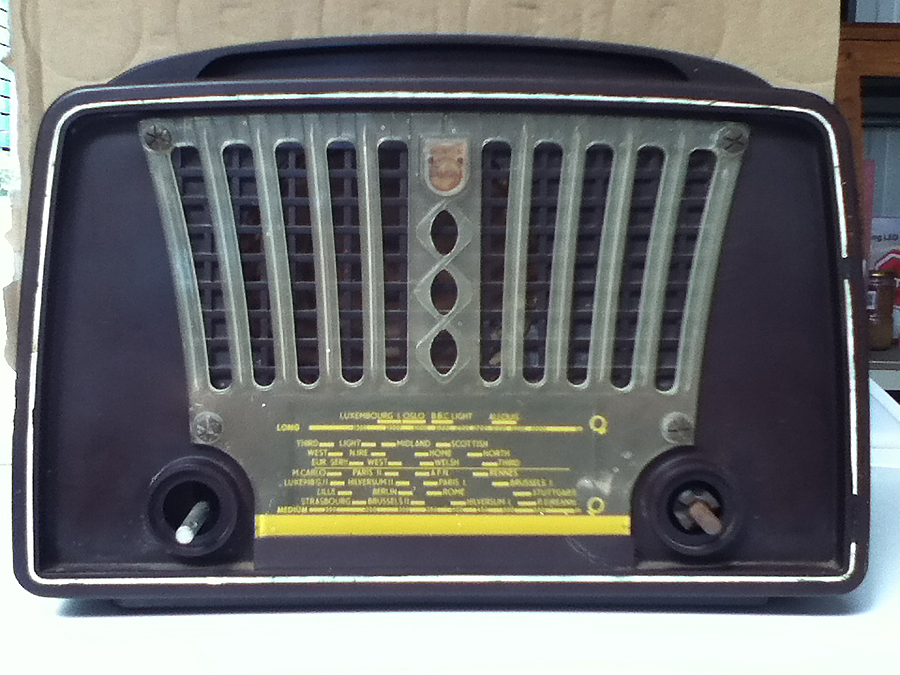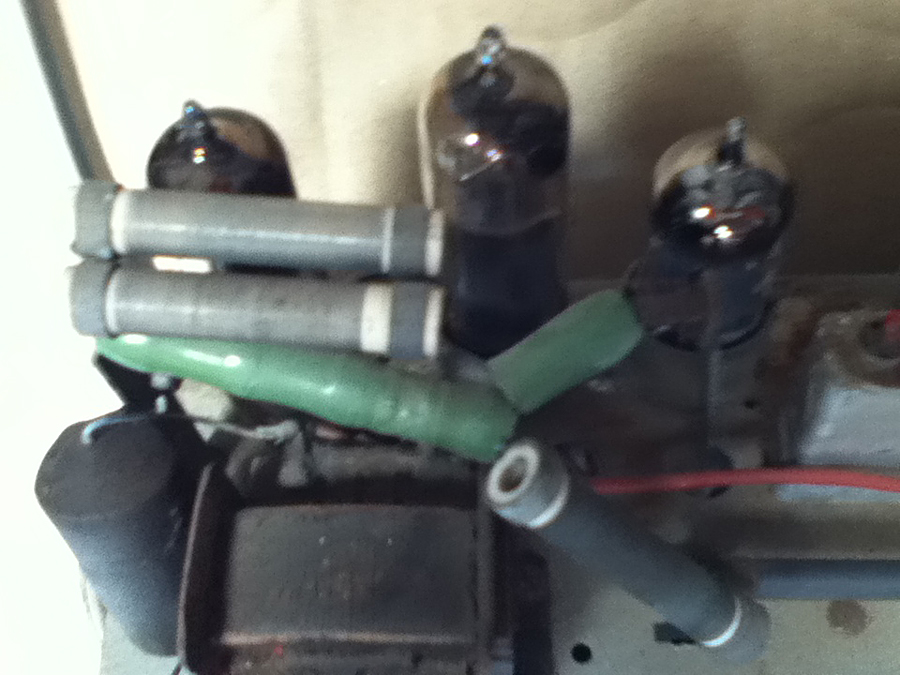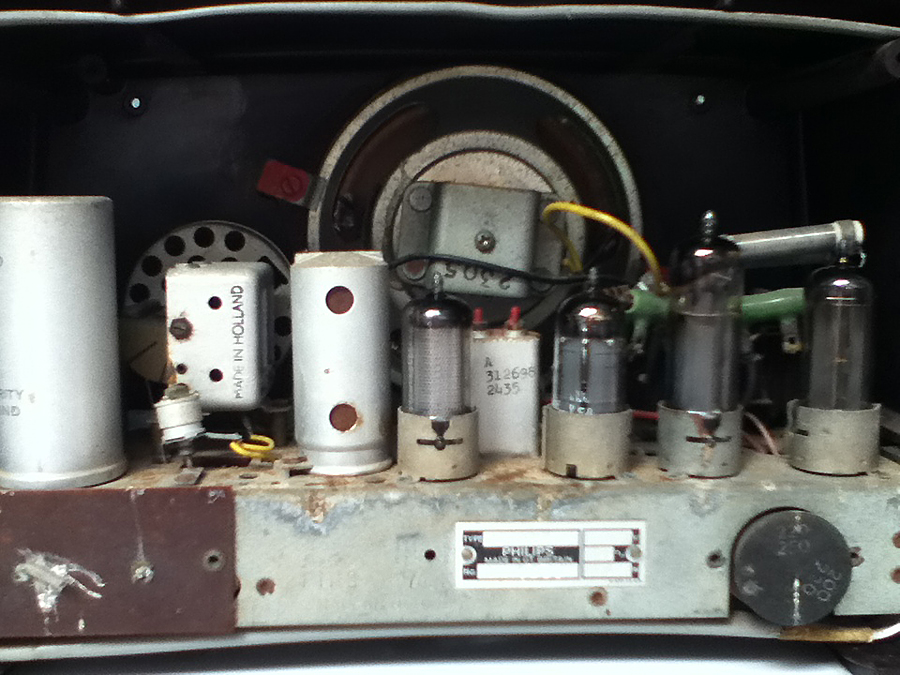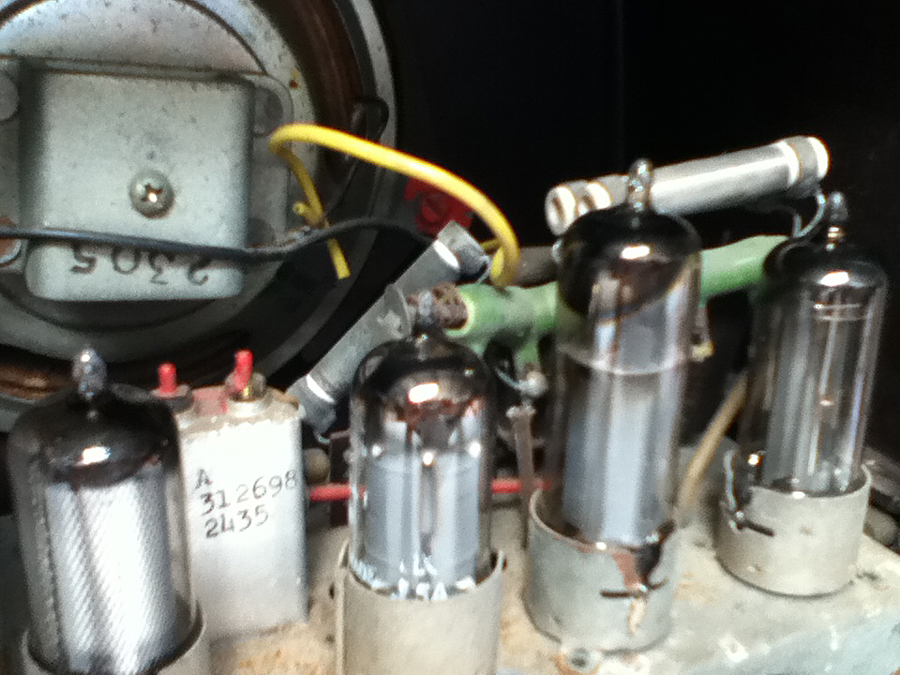General Discussion
Forum home - Go back to General discussion
|
Don't power up vintage electronics - the message is getting through!
|
|
|
Return to top of page · Post #: 1 · Written at 8:30:27 PM on 28 September 2017.
|
|
|
|
Location: Belrose, NSW
Member since 31 December 2015 Member #: 1844 Postcount: 2674 |
|
Yesterday on American Pickers they found an early portable TV. The issue of "Does it work?" soon came up. |
|
|
Return to top of page · Post #: 2 · Written at 9:40:49 PM on 28 September 2017.
|
|
|
|
Location: Wangaratta, VIC
Member since 21 February 2009 Member #: 438 Postcount: 5663 |
|
I did post a link to an idiot on Utube that was spotted by someone on the American forum, demonstrating a way to get killed, by powering. I believe there was consensus that Utube was to be asked to remove it. |
|
|
Return to top of page · Post #: 3 · Written at 9:42:17 PM on 28 September 2017.
|
|
|
|
Location: Sydney, NSW
Member since 28 January 2011 Member #: 823 Postcount: 6905 |
|
It's good to hear that the message getting out. Whether or not it's getting through is yet to determined. |
|
|
Return to top of page · Post #: 4 · Written at 7:10:11 AM on 29 September 2017.
|
|
|
|
Administrator
Location: Naremburn, NSW
Member since 15 November 2005 Member #: 1 Postcount: 7585 |
|
Marc, the link you posted to that video should still be here somewhere. I wonder if people are still bagging that bloke. I remember having something to say about it there. The bloke was a walking disaster area, from memory. ‾‾‾‾‾‾‾‾‾‾‾‾‾‾‾‾‾‾‾‾‾‾‾‾‾‾‾‾‾‾‾‾‾‾‾‾‾‾‾‾‾‾‾‾‾‾‾‾‾‾‾‾‾‾‾‾‾‾‾‾‾‾‾‾‾‾‾‾ A valve a day keeps the transistor away... |
|
|
Return to top of page · Post #: 5 · Written at 4:02:40 PM on 29 September 2017.
|
|
|
|
Location: Adelaide, SA
Member since 27 February 2010 Member #: 630 Postcount: 398 |
|
Gota Love the KFC buckets on the desk.... Quality storage of parts ‾‾‾‾‾‾‾‾‾‾‾‾‾‾‾‾‾‾‾‾‾‾‾‾‾‾‾‾‾‾‾‾‾‾‾‾‾‾‾‾‾‾‾‾‾‾‾‾‾‾‾‾‾‾‾‾‾‾‾‾‾‾‾‾‾‾‾‾ Valve radios, They just don't make them like they used to |
|
|
Return to top of page · Post #: 6 · Written at 7:51:59 PM on 29 September 2017.
|
|
|
|
Location: Linton, VIC
Member since 30 December 2016 Member #: 2028 Postcount: 472 |
|
This gorgeous Philips may just qualify into this discussion.     |
|
|
Return to top of page · Post #: 7 · Written at 8:22:58 PM on 29 September 2017.
|
|
|
|
Administrator
Location: Naremburn, NSW
Member since 15 November 2005 Member #: 1 Postcount: 7585 |
|
So how is it this set (made in Great Britain) is not earthed. Did Australia have an earth-mains system before England? Surely not! ‾‾‾‾‾‾‾‾‾‾‾‾‾‾‾‾‾‾‾‾‾‾‾‾‾‾‾‾‾‾‾‾‾‾‾‾‾‾‾‾‾‾‾‾‾‾‾‾‾‾‾‾‾‾‾‾‾‾‾‾‾‾‾‾‾‾‾‾ A valve a day keeps the transistor away... |
|
|
Return to top of page · Post #: 8 · Written at 11:34:40 PM on 30 September 2017.
|
|
|
|
Administrator
Location: Naremburn, NSW
Member since 15 November 2005 Member #: 1 Postcount: 7585 |
|
Photos uploaded to Post 6. ‾‾‾‾‾‾‾‾‾‾‾‾‾‾‾‾‾‾‾‾‾‾‾‾‾‾‾‾‾‾‾‾‾‾‾‾‾‾‾‾‾‾‾‾‾‾‾‾‾‾‾‾‾‾‾‾‾‾‾‾‾‾‾‾‾‾‾‾ A valve a day keeps the transistor away... |
|
|
Return to top of page · Post #: 9 · Written at 12:33:26 AM on 1 October 2017.
|
|
|
|
Location: Latham, ACT
Member since 21 February 2015 Member #: 1705 Postcount: 2220 |
|
Omg what are those wire wound resistors like that for . They do not look correct. |
|
|
Return to top of page · Post #: 10 · Written at 1:12:31 AM on 1 October 2017.
|
|
|
|
Location: Sydney, NSW
Member since 28 January 2011 Member #: 823 Postcount: 6905 |
|
Transformerless sets were designed to be able to run from both AC and DC mains supplies. (Australia also had DC mains. There's a table of dates of conversion of states and regions to AC somewhere on this site) |
|
|
Return to top of page · Post #: 11 · Written at 3:42:38 AM on 1 October 2017.
|
|
|
|
Administrator
Location: Naremburn, NSW
Member since 15 November 2005 Member #: 1 Postcount: 7585 |
|
The resistors positioned that way does look unusual but if the set is AC/DC and was originally fitted with a back then anything can be expected, especially if there is a risk that the chassis and even pot shafts could be live under normal use. ‾‾‾‾‾‾‾‾‾‾‾‾‾‾‾‾‾‾‾‾‾‾‾‾‾‾‾‾‾‾‾‾‾‾‾‾‾‾‾‾‾‾‾‾‾‾‾‾‾‾‾‾‾‾‾‾‾‾‾‾‾‾‾‾‾‾‾‾ A valve a day keeps the transistor away... |
|
|
Return to top of page · Post #: 12 · Written at 9:44:14 AM on 1 October 2017.
|
|
|
|
Location: Linton, VIC
Member since 30 December 2016 Member #: 2028 Postcount: 472 |
|
It seems like I have created some confusion here, so a little clarification: |
|
|
Return to top of page · Post #: 13 · Written at 10:09:30 AM on 1 October 2017.
|
|
|
|
Location: Oradell, US
Member since 2 April 2010 Member #: 643 Postcount: 835 |
In the USA, white is neutral, and black is a hot wire. There is one exception for white being the neutral, if you have a "traveler" wire going to a wall switch and back (where there is nothing else in the box holding the switch) then the white at the switch is a hot wire. Also in the USA, hot chassis radios evolved to have more user protection. At first, the chassis was wired directly (usually through a power switch) to one side of the mains powerline. The cabinet, being wood or bakelite, would insulate the chassis from the user. And knobs were also plastic like bakelite, and usually a cardboard back kept you away from the chassis. But pull off a knob and you have exposed powerline waiting to bite you. Later, they made the powerline be a B- bus, with a usually 0.1μF cap providing an RF ground to tie the chassis to the B_ line. Somewhat better, as the cap would limit shocking current. Later, the volume control and tuning would have plastic shafts. And more later on, the plastic knobs would be captive, in that you couldn't remove them from the plastic cabinet (sometimes if you removed the chassis you could twist the loose knobs enough to fit a keyhole slot to remove and lose them). This last essentially made the radio a fully enclosed (but with vent slots) plastic box that you could not touch any internal metal. We had long used internal loops or ferrite rod AM antennas, and no maker used long wires as antennas. Oh, we did have long wires, but every maker quit that pretty much before WW2. Aussie makers could have used the power plug to mandate that the chassis was near ground earth potential, IF there was a polarization standard. \ / instead of | | Heard that there was no standard until sometime in the 1960's? And this also assumes electricians never wire powerpoints backwards. |
|
|
Return to top of page · Post #: 14 · Written at 6:22:46 PM on 1 October 2017.
|
|
|
|
Location: Linton, VIC
Member since 30 December 2016 Member #: 2028 Postcount: 472 |
|
I WAS WRONG! |
|
|
Return to top of page · Post #: 15 · Written at 6:31:36 PM on 1 October 2017.
|
|
|
|
Administrator
Location: Naremburn, NSW
Member since 15 November 2005 Member #: 1 Postcount: 7585 |
|
I intend to keep the chassis earthed, not only for protection, but it helps with performance, especially long distance reception. ‾‾‾‾‾‾‾‾‾‾‾‾‾‾‾‾‾‾‾‾‾‾‾‾‾‾‾‾‾‾‾‾‾‾‾‾‾‾‾‾‾‾‾‾‾‾‾‾‾‾‾‾‾‾‾‾‾‾‾‾‾‾‾‾‾‾‾‾ A valve a day keeps the transistor away... |
|
|
You need to be a member to post comments on this forum.
|
|

Sign In

Vintage Radio and Television is proudly brought to you by an era where things were built with pride and made to last.
DISCLAIMER: Valve radios and televisions contain voltages that can deliver lethal shocks. You should not attempt to work on a valve radio or other electrical appliances unless you know exactly what you are doing and have gained some experience with electronics and working around high voltages. The owner, administrators and staff of Vintage Radio & Television will accept no liability for any damage, injury or loss of life that comes as a result of your use or mis-use of information on this website. Please read our Safety Warning before using this website.
WARNING: Under no circumstances should you ever apply power to a vintage radio, television or other electrical appliance you have acquired without first having it checked and serviced by an experienced person. Also, at no time should any appliance be connected to an electricity supply if the power cord is damaged. If in doubt, do not apply power.
Shintara - Keepin' It Real · VileSilencer - Maintain The Rage

